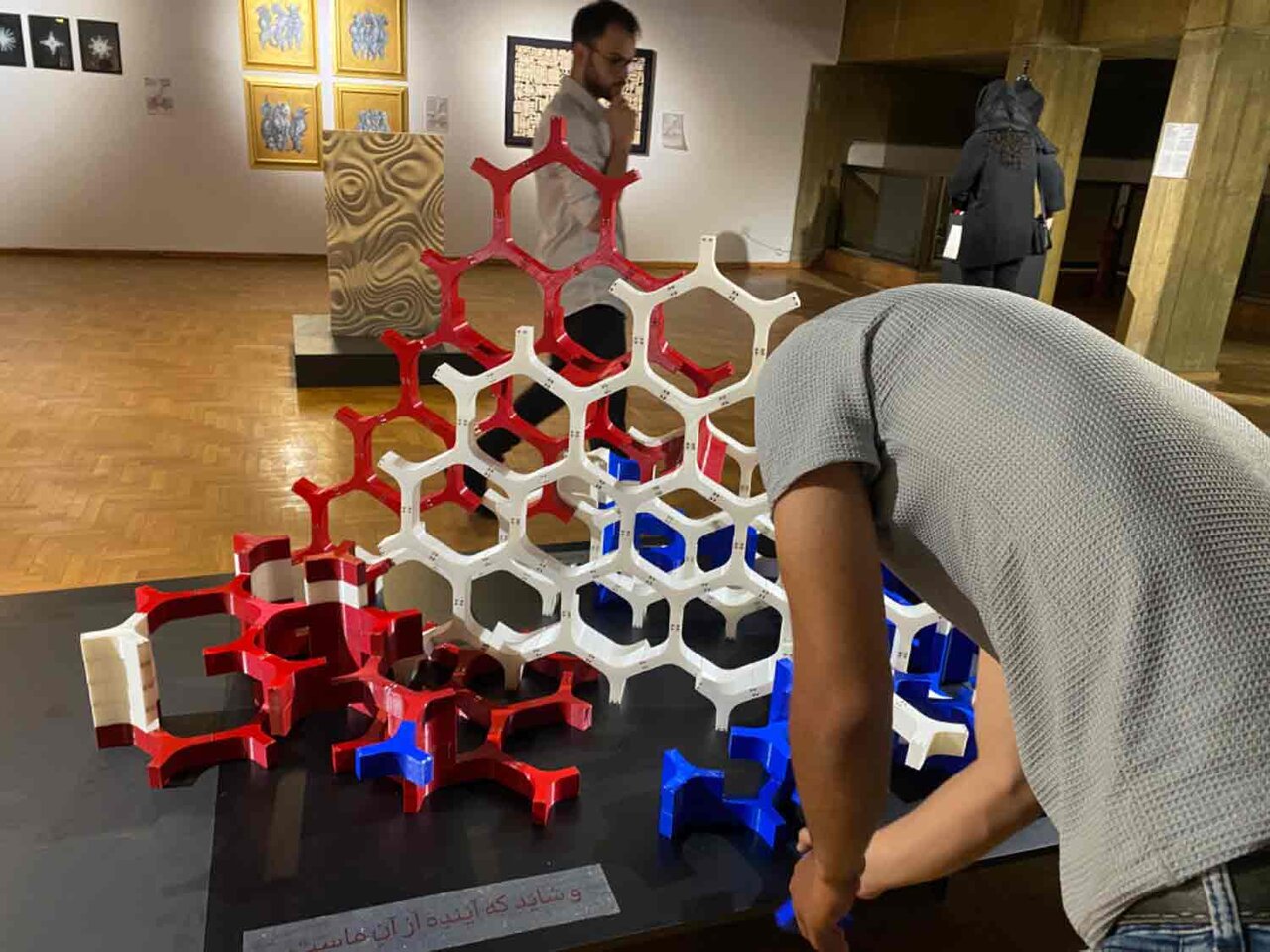Exploring role of patterns in architecture and art in Patternitechture 4

TEHRAN-The 4th edition of the biennial art event Patternitechture is underway at the Niavaran Cultural Center in Tehran.
Patternitechture 4, titled “Boundaries That Expand; Where We Stand,” places the focus of its projects and programs on the exploration of the world of new patterns. Through this lens, it aims to study the relationship of patterns with the city, nature, society, and people within the context of the contemporary world, ISNA reported.
In this edition of the event, 46 works in the form of volumes, installations, paintings, and digital arts from prominent visual and architectural artists have been exhibited.
Architect, graphic designer, and visual artist Mohammad Hassan Forouzanfar is the visual arts manager of the event, which has been curated by architect and researcher Ghazal Rafalian and art director and architectural designer Bita Shekari.
Designing patterns, either as a surface treatment or a logic of assembly has always engaged both art and science. Moreover, by exploring many complexities of nature, we can discover simple or intricate patterns, that structure an amazing or even at times an unexpected product.
Chronologically studying Iranian art and architecture, numerous valuable instances of formal, structural, and conceptual application and design of patterns can be noticed. However, since a few centuries ago, the endemic capabilities of Iranian designers have been reduced to repetition and unproductive adaptation of what has already been developed by their ascendants. Accordingly, they failed to make efficient and practical use of the technological advances to approach the matter in a meaningful way. Despite that, exploring and representing the formal and conceptual aspects of patterns has remained a priority for Iranian designers.
This dispute is the main driver of an exhibition that explores the application of patterns in the built environment in contemporary Iran. Inviting designers of various backgrounds is an effort to unwind the multifold meaning of patterns and represent the various approaches towards it and its capabilities. this event reflects a part of direct and indirect endeavors by the contemporary Iranian designers who tried to generate and regenerate these patterns and hope to address the historical evolution of formal and conceptual development of pattern in Iran. Patternitechture is a review of how artists, architects, and urbanists in Iran construe patterns and their application in the built environment and tries to initiate a debate among them.
Patterns are a medium to recognize and redefine the world. They enable us to establish meaningful connections with objects and ideas. A structured, controllable, and replicable connection that shapes our environment and provides a foundation for extending our perceptions and creating new forms. The pursuit of discovering and establishing order, and controlling chaos in this environment, has not only been an endeavor in the realm of knowledge but has also been embraced by many artists to create mirrors of the world they perceive. Through the creation of abstract worlds, they celebrate this manifest order.
Although we discuss the extension and repetition of structures, replicable patterns are not condemned to eternal repetition; rather, they possess a highly dynamic and living nature. Like living beings, they are born, grow, mature, and ultimately give way to new patterns. Today we witness that advanced tools related to artificial intelligence are erasing the boundaries of knowledge production and toolmaking across all fields, altering the previous structures of society. Yet, the average user has not clearly defined their relationship with digital tools. We face a new generation of knowledge and technology that has redefined our interaction with subjects and, now, with the accelerating emergence of innovative tools, the question arises: how can the modern human redefine their relationship with new patterns?
Patternitechture has always been devoted to exploring patterns that have been effective in shaping the built environment, providing not only a space for reflecting contemporary designers’ efforts but also an opportunity to create new patterns that pave the way for addressing the contemporary human’s demands from their living environment. This event invites all enthusiasts as an opportunity for idea exchange and discussion about the role of patterns in architecture and art. It encourages participation in this shared quest, creating a unique, inspiring, and transformative space.
Patternitechture project was initiated in 2015, due to an invitation from Rafalian and the collaboration of a dedicated group of curators and activists in the realm of art and architecture. This collective effort included individuals like Shekari, Sina Mostafavi, Delagah Dadbeh, and many other like-minded people. The core focus of this initiative was to explore and document the concept of pattern or repetitive elements, that produce a higher meaning by extending themselves during time and space and affect the built environment.
Patternitechture strives to become a credible, autonomous hub for fostering interdisciplinary research, generating synergies, and offering a platform to recognize, uncover, develop, and critique patterns in our surroundings through art and architecture mediums. Its activities encompass documenting existing works, ideation, robust discussions, research-based education, and the exploration of cutting-edge technologies.
Each Patternitechture event follows a structured format, consisting of an exhibition and lateral events. The exhibition segment comprises a general open call as well as a curated section featuring special guests. The lateral events, tailored to the project’s needs, encompass meetings, discussion panels, educational workshops, and various related activities.
The 4th edition of Patternitechture will run until Friday, August 16, at Pate galleries 1 and 2 of Niavaran Cultural Center located in the north of Tehran.
SS/SAB
Leave a Comment